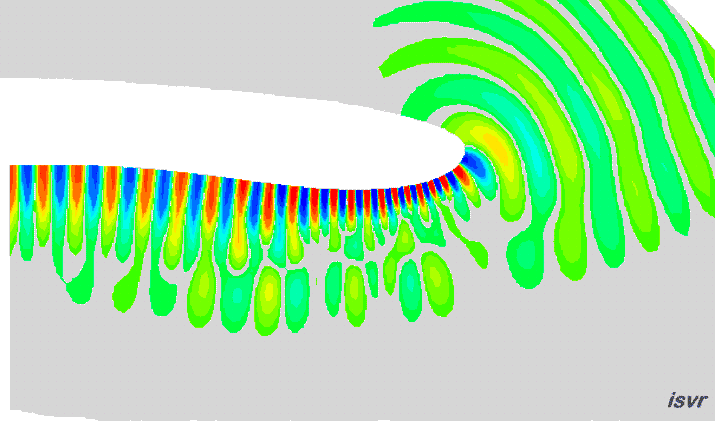Diffraction
The spreading of waves when they pass through an opening, or around an obstacle into regions where we would not expect them, is called diffraction. Diffraction occurs if a wave encounters an object and if the wavelength is of the same size (or greater than) the object size. An example of diffraction phenomena is given by the spreading of waves around an obstacle. The animation below illustrates how a travelling wave emitted from the upper left corner by, say, an aeroplane is diffracted by a sound barrier erected to shield homes from the traffic noise. Interference patterns due to the superposition of the incident wave and the diffracted wave are clearly seen just before the barrier (bottom left of the animation). A shadow region is observed just behind the barrier (bottom right of the animation). It is characterised by low noise levels due only to the acoustic diffracted wave. Thus, this solution for noise reduction is efficient only if the houses are located within the shadow region of the sound barrier.
The animation below shows another example of diffraction. The white region is a cross-section of the front part of an aircraft engine, the sound wave is produced by the turbofan. Diffraction determines the direction in which most sound will be radiated, an important factor for the acoustical engineers who work to make them as quiet as possible.
[Soundfield computed by James Hamilton as part of his PhD at ISVR]

